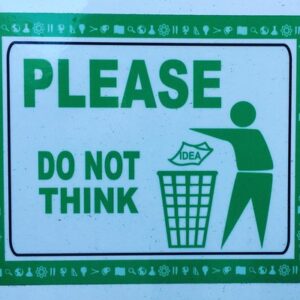You can always find chatter about the cost of living. The most recent item is that a family of four in Michigan needs a household income of about $65,000 to enter the middle class. This figure uses interpolated data from the Pew Charitable Trusts and a BLS inflation calculator.
I doubt there’s much precision in determining the edges of the middle class, but according to the Pew researchers, the size of the middle class has shrunk by more than 10% in the past 50 years. To be fair, some people have fallen out of the middle class by “falling up.” They’re now in higher income brackets and ride the crest of the growing income divisions among Americans.
Other people have fallen out of the middle class by falling traditionally. The earnings of these households have not kept pace with inflation, and they live in or near poverty. These may be single-parent households, single-earner households, or large households whose workers simply can’t keep up with compounding expenses. They cannot amass even the smallest amount of wealth.
Thirty percent of Americans live paycheck-to-paycheck. One measure of individual economic stability the Fed uses is a hypothetical $400 surprise expense. The percentage of Americans who could tolerate an unexpected $400 expense with cash has ranged between 44%-48% over the last five quarters. Between 8%-12% could come up with $400 using a combination of cash and non-cash options. About one-quarter of Americans would be able to pay a $400 bill using only credit. About 20% of Americans could not tolerate a $400 expense.
Young adults adopting different strategies to enter middle class
In the first quarter of 2024, the percentage of Americans who could pay cash for a $400 expense increased, but according to Fed data, people who classified themselves as high earners drove that increase.
The Fed uses this question to gauge the way people position themselves with regard to their savings. It’s fair to believe that people who don’t earn a lot don’t have the luxury of savings. However, that’s not always the case. Sometimes, people who earn the least manage their money the best because they have little margin for error.
Young adult earners are compensating for their financial positions by eschewing traditional means of gaining wealth, like not marrying, delaying childbearing, and avoiding debt – even so-called “good” debt. The net result of these actions – among never-married adults – is that the wealth gap between men and women is closing. The wealth gap – currently $8,900 – is the smallest ever recorded. The Fed started collecting this data point in 1989. Despite the decline in disparity, households headed by never-married women have just $0.68 of “wealth” compared to every $1 of wealth in households headed by never-married men.
Also according to the Fed’s most recent Survey of Household Economics and Decisionmaking (SHED), young adult households have a median income of less than $40,000. If you remember, the average Michigan household-of-four needs $65,000 to avoid poverty. So that means that young adults either need to come up with an additional $25,000-$30,000 in annual income to be in the middle class, or they need to get comfortable living in poverty.
Notice that the SHED data don’t provide any insight into the size of a “young adult household.” These young adults may already have children and may already be living under the shadow of poverty.
Community college administrators need to do better by young adults
This is why community colleges need to do a MUCH BETTER JOB of developing academic programs that offer adult learners a pathway to the middle class. The average $37,000/yr job that our community colleges seem to have specialized in won’t cut it.
It is incumbent upon community college administrators – who seem so numerous and demand so much in terms of compensation – to start producing real, actionable, and worthwhile strategies to improve the graduation rates and economic outcomes for community college students.
Photo Credit: freestocks.org






















